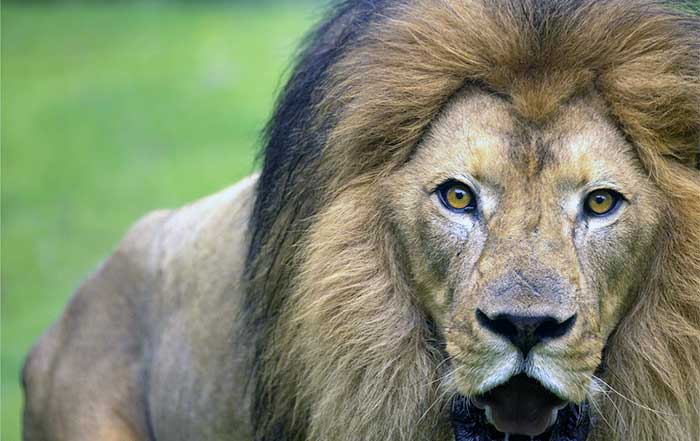With its newest habitat, Predators of Asia & Africa, the Fort Worth Zoo hosts the wildest summer adventure yet! Discover and interact with some of the most dramatic and skilled hunters of the animal kingdom like never before, only at the Fort Worth Zoo. This new habitat features many exciting new elements:
Cascading waterfalls, lush grass, trees and rock structures form enriching, naturalistic spaces for the Zoo's carnivores of Asia and Africa, often separating guests by only a pane of glass.
Upon entering the Zoo, guests are greeted by our pride of African lions in their beautiful and enhanced new home. Guests can also observe the pride from above at the top of the waterfall flowing through the entire Predators complex.
Guests continue their journey into Asia to meet a species new to the Zoo: the elusive clouded leopard. Following the winding, shaded walk, guests discover the critically endangered Sumatran tiger and get up close and personal with the intriguing striped hyena.
Upon crossing into Africa, guests encounter the cheetah, the fastest land mammal on earth. These animals return to the Zoo in an enriching and newly expanded habitat. Beyond the grotto, a pack of African painted dogs also rejoin us. Finally, the Zoo welcomes African leopards for the first time in its 114-year history. Don't miss the playful, young sibling duo that now live here at the Zoo.
Multiple aviaries house several exotic bird species, including the red-crowned crane, Satyr tragopan, African pygmy falcon and more.
Most importantly, complete with educational programming such as keeper chats, Predators of Asia & Africa will share the critical messages of conservation and environmental stewardship.
Predators of Asia & Africa is the third phase of a $130-million, four-phase master plan, A Wilder Vision, that guarantees for generations the survival of certain species that may in our lifetime become extinct in the wild. The first phase, African Savanna, opened in 2018 and the second phase, Elephant Springs, opened in 2021. Each of these habitats feature lush greenery, enlarged spaces and interactions guests cannot get anywhere else including:
A giraffe experience that gives guests the opportunity to feed the tallest land mammal on earth and observe them from eye-level.
Standing nose-to-nose with a hippo at an underwater viewing area.
Squirting a gentle stream of water onto the Asian elephant herd as they swim in the 400,000-gallon river that flows through the authentic fishing village.
Other Zoo highlights that you won't want to miss this summer include seeing the western lowland gorilla baby, Bruno (born in November 2022) and two Asian elephant calves, Brazos (born October 2021) and Travis (born February 2023).
By exploring the Fort Worth Zoo, guests can not only see these animals firsthand, but their visit helps fund conservation efforts locally and around the world, ensuring a future for at-risk species. Admission is $18 for adults, $14 for children ages 3 to 12, $14 for seniors ages 65 and up, and free for children 2 and younger. Admission tickets can be used within 30 days of purchase. Parking is $5 per vehicle. The Fort Worth Zoo is open 365 days a year. Visit fortworthzoo.org for the most up-to-date hours.
The nationally acclaimed Fort Worth Zoo has been voted a top zoo in North America by USA Today, one of the "World's Greatest" by BloombergTV, the Best Zoo in Texas by Yahoo Travel, the No. 5 zoo in the nation by USA Travel Guide, the No. 1 family attraction in the DFW Metroplex by Zagat survey and a Top 10 Zoo or Aquarium by FamilyFun magazine. Home to nearly 7,000 animals, the Zoo is beginning its final installment of a four-phase master plan. The first phase, African Savanna, opened in 2018; the second phase, Elephant Springs, opened in 2021; the third, Predators of Asia & Africa, opened in June 2023. The fourth and final phase, Forests & Jungles of the World, is next. The institution's focus on education and conservation is second to none, enhancing the lives of more than 1 million visitors a year and the animals that live there.

